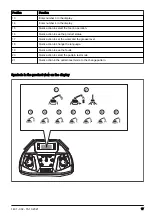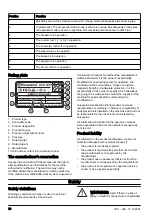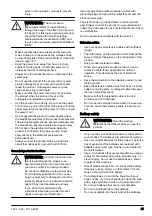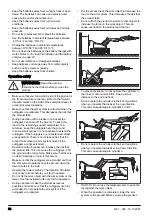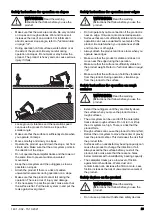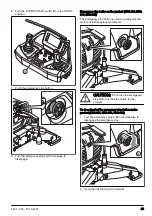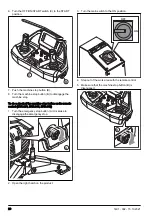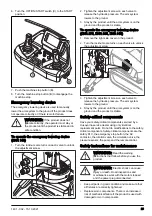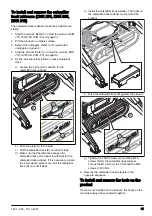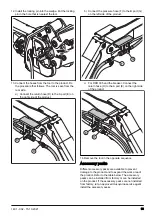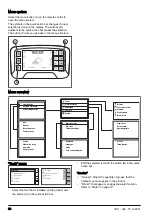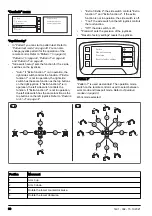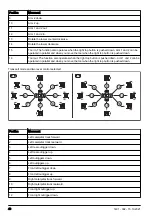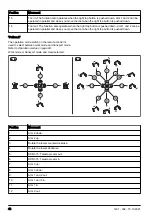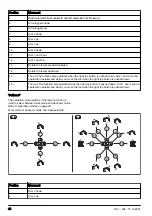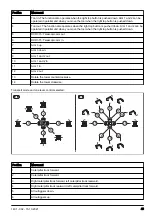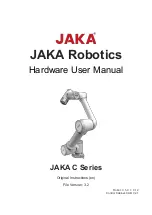
• Replace worn or missing signs and decals.
• Do not use a product that is defective. Do the safety
checks, maintenance and the servicing as given in
this manual. All other maintenance work must be
done by an approved service agent.
• Make sure you have necessary training to do
maintenance.
• Use lifting equipment to lift heavy product parts and
to keep them in a stable position during
maintenance. Lock product parts mechanically
before maintenance to prevent injury from moving
parts.
• If you go away from the product, do a lockout-tagout
procedure.
• Only approved servicing personnel are permitted to
do maintenance in the electrical system and the
hydraulic system.
• Do the maintenance to make sure that the product
on page 63
.
• Do not do the troubleshooting of hydraulic leakage
with your hands. Do the troubleshooting visually.
Operation
Introduction
WARNING:
Before you operate the
product, you must read and understand the
safety chapter.
To do before you operate the product
1. Read the operator's manual carefully and make sure
that you understand the instructions.
2. Put on necessary personal protective equipment.
Personal protective equipment on page 20
.
3. Use a remote control harness to keep your body in
correct position and prevent injury.
4. Make sure that no persons are in the work area.
5. Do daily maintenance. Refer to
schedule on page 63
.
6. Make sure that the product is not damaged.
7. Install the tool on the product. Make sure that the
tool is correctly and safely installed. Refer to
install and remove the tools on the product on page
31
.
8. Make sure that the safety devices on the product are
not defective.
9. Put the product in the work area. Make sure that the
transportation of the product to and in the work area
is done safely and correctly. Refer to
on page 103
.
10. Make sure that the power cord and extension cable
are in good condition and not damaged.
11. Connect the product to a power source. Refer to
connect the product to a power source on page 30
.
12. Make sure that tools, such as screwdrivers or other
objects that are not used, are removed from the
product.
13. Make sure that the temperature of the hydraulic oil is
not less then 10°C/50°F. Refer to
.
To connect the product to a power
source
WARNING:
Always connect the
product through an RCD with personal
protection. The RCD must trip at a ground
fault of 30 mA.
1. Make sure that the voltage is compatible with the
product and that the correct fuses are used. Refer to
Guide values for connection to a mains socket on
page 113
.
2. Connect the power plug of the product to the
extension cable.
3. Connect the extension cable to a mains outlet.
To let the product become warm
CAUTION:
Do not use maximum pump
pressure if the temperature of the hydraulic
oil is less than 10°C/50°F. You get maximum
pump pressure when you operate the
outriggers or the arm system to maximum
extension.
1. Start the product. Refer to
145) on page 52
and
275, DXR 305, DXR 315) on page 53
.
2. Extend the outriggers. Refer to
outriggers on page 61
.
3. First operate the caterpillar tracks slowly and then
more quickly.
4. Move the arm system slowly in all directions. Make
sure that there is no load on the arm system.
5. Do a check of the temperature of the hydraulic oil.
The optimal work temperatures are between 40°C/
104°F and 55°C/131°F.
6. If the temperature is not correct, do the procedure
again.
30
1401 - 002 - 15.10.2021


